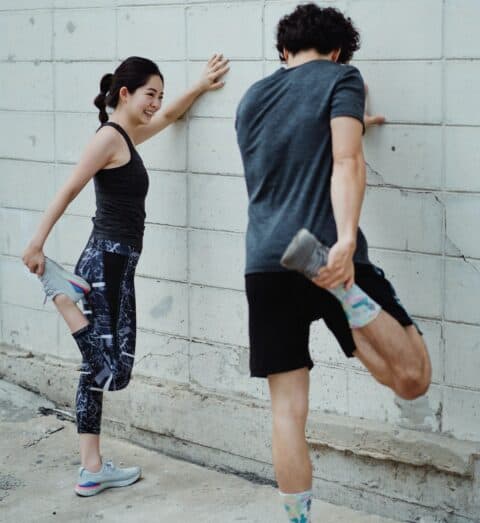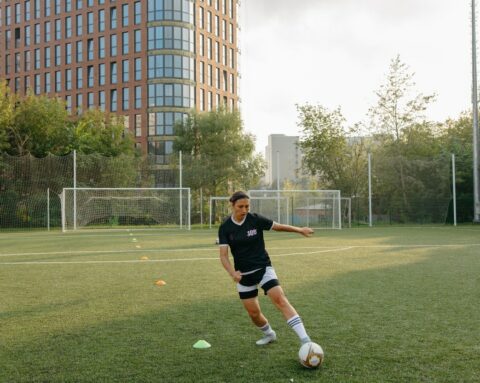Your anterior cruciate ligament or (ACL) is comprised of four knee ligaments that are vital to the stability of your knee joint. When ruptured, the ACL is known as the most debilitating knee ligament injury.
Causes
Interestingly, the vast majority of Anterior Cruciate Ligament tears occur as non-contact injuries. This refers to injuries that take place outside of contact such as a tackle in rugby. Often you will see an ACL injury occur during a sprint, pivoting on a sidestep or landing from a jump. Around 20% of ACL injuries arise from contact.
There are certain sports where an anterior cruciate ligament injury is more likely to occur. These sports generally require lots of pivoting, cutting and turning movements which place pressure on the ACL and surrounding joints. Sports where there is a higher chance of injury occurring include tennis, volleyball, hockey, dancing, gymnastics, rugby, football, netball and many others. ⠀
Symptoms
It is common for people who experience an ACL injury to hear or feel a “pop” in their knee. Significant pain and swelling are usually apparent and scans are required to determine the extent of the injury.
Diagnosis
The anterior cruciate ligament is usually diagnosed through clinical knee examinations by your myotherapist or sports doctor. Your myotherapist will identify signs of instability in the ACL ligament through tests which place stress on the area. These tests are very helpful for detecting ruptures or tears. It is also common for an MRI to be used to determine whether there is a tear in the ACL. MRIs’ are also great for assessing whether there are any signs of other injuries in the knee such as a meniscus tear or bruising.
Treatment
It is common for ACL patients with a tear to start to feel better within a few weeks of an ACL injury. Whilst some people at this stage may start to believe their knee is healthy again it is only due to the swelling begin to settle. At this stage of recovery, it is very common for the injury to give way or worsen! Some tears will not necessarily require reconstruction of the ACL. This is usually due to the answers to several important questions which will decide whether surgery will be necessary. These questions may include, your age, you regular sports routines, your level of knee stability, your future life plans as well as other similar questions.
The best way to avoid having reconstructive surgery on your ACL is to undertake a specific knee rehabilitation program. These programs will contain exercises ranging from leg strengthening to functional enhancement related to your specific lifestyle needs. The treatment you receive from your myotherapist will enable you to reduce inflammation and pain, strengthen your limbs & knee, normalise your muscle lengths, improve your technique, improve your function, normalise your range of motion and minimise your chances of re-injury. Programs such as these will not be available to everyone so it is important to have your knee tested by your doctor and myotherapist.
Surgery
In some cases, your ACL tear may require reconstructive surgery. This is usually achieved through having another tendon or ligament substitute for the torn ACL ligament. Whilst there are risks of ACL surgery that include persistent pain or instability, knee stiffness and infection; the positive news is that more than 90% of patients do not experience complications from ACL surgery. ⠀
Post-operation is one of the most important aspects of ACL surgery. Having an experienced myotherapist closely observe and guide your recovery path is the best way to ensure a successful outcome. During this phase, you will be attempting to restore power and endurance, full knee motion as well as improving balance and agility.
Return To Play
It is common for athletes to experience many difficulties returning to their sport of choice after sustaining an ACL injury. The best chance of returning to your sport is to undergo surgery with post-op rehabilitation and myotherapy. It is important to speak with your surgeon and myotherapist to determine the best way forward to rehabilitating your injury.






